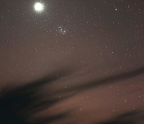Understanding focal ratios
Aug 03, 2022
4 minutes
by Richard S. Wright, Jr.

ONE OF THE MOST FUNDAMENTAL
principles of photography is that the more light you collect, the less image noise you’ll have. This is especially relevant when it comes to photographing the night sky, in which a good signal-to-noise ratio is vital for pleasing results. The bottom line is simple: More light (‘signal’) is good.
You may think that boosting your camera’s ISO setting is an easy way improve the situation, but doing so only makes the image appear brighter and does nothing to increase the amount of recorded signal. This is not the solution you are looking for.
Let there be light
There are a number
You’re reading a preview, subscribe to read more.
Start your free 30 days

